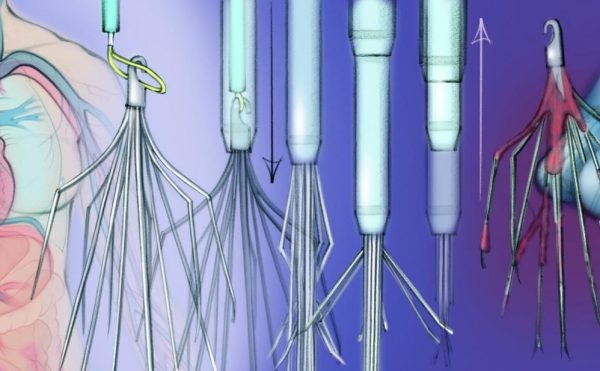Caput succedaneum is one of several birth-related traumas that newborn babies experience. It is a subcutaneous swelling (edema) over the baby’s presenting head, which contains a collection of fluid and infiltrates the connective tissue beneath the skin. In most cases, caput appears like a puffy bump or cap on the baby’s scalp.
While it looks to be concerning, instead, caput is not considered harmful to the baby. Scroll down this article to learn deeper insights about this type of newborn’s physical trauma!
What is Caput Succedaneum?
Physically similar to cephalhematoma, caput succedaneum is a medical term that refers to an unusual lump or swelling on the head of a newborn baby. It is a type of edema or collection of fluid just under the skin.
Further, Brown Trial Firm states that caput is a lump caused by pressure-induced swelling of the scalp. This most often occurs due to the baby’s head moving through the birth canal during a long or difficult normal birth.
As cited by the Birth Injury Justice Center, according to the U.S. National Library of Medicine, caput can result in a cone-shaped head that feels soft or even puffy. It is because a baby’s immature skull bones have not yet fused.
2 Types of Caput Succedaneum’s Causes
The following two causes of caput injury in the explanation below are the most common.
1. Labor
Babies are prone to bruising because their bodies are brittle. Hence, caput typically occurs when the baby’s head is squeezed or pulled during labor and delivery. The baby’s head and scalp then swell due to external pressure from the birth canal.
The flexible plates will make up an infant’s skull contract and overlap during normal vaginal delivery. This phase helps the baby squeeze through the cervical opening and into the birth canal.
As the fetus pushes its way through the very narrow birth canal, the top of the head becomes the focal point of significant pressure. In short, it’s the head’s pressure from the mother’s uterus or vaginal wall during childbirth that most-commonly cause the caput to occur.
The baby’s head may swell due to compression and pressure from the parent’s uterine walls, cervix dilation, and vaginal walls.
In general, labor that takes a long time and requires the use of forceps or vacuum extraction tools can increase the swelling risk of complications.
2. Lack of Amniotic Fluid
On the other hand, scalp swelling is more likely to develop if the amniotic fluid membranes rupture early in labor. In certain cases, some babies have very little amniotic sac (water breaks) while they develop in the uterus.
A lack of fluid will put more pressure on the baby’s body during delivery since it will eventually act as cushioning. Thus, the baby’s head will then be subject to greater pressure from the mother’s pelvic bones.
As a consequence, this type of scalp swelling can occur before labor or even during an in-utero ultrasound. Altogether, the longer there is a fluid cushion around the infant, the less likely there will be scalp swelling.
Not only the two main causes above, but caput also commonly occurs in certain situations. For instance, the fetus is located in a deep position in the pregnant woman’s pelvis before birth, the newborn is heavier than normal, and medical malpractice.
What are The Symptoms of Caput Succedaneum?
Normally, caput is most obvious immediately after delivery. Parents who have a baby with an injury may notice an unusual head shape right after birth. For more details, here are the two most prominent symptoms of caput that may occur during the newborn stage.
1. A Soft Puffy Swelling
The greatly noticeable symptom of caput is puffiness, just beneath the scalp flesh. The skin is one to two centimeters deep and has a swollen yet spongy texture.
However, the puffiness may look different in many babies. For some children, it looks like a head bump. While others’ appearance may look like their entire head is swollen. Doctors frequently use the size and location of the puffiness to correctly recognize caput succedaneum.
Nonetheless, the swelling may be limited to one side or extend across the midline of the scalp. Moreover, the effects are usually most visible on the first part of the skull to pass through the birth canal. For information, pressing on it may result in a dimple in the skin.
2. Scalp Bruising
Not as extensive as cephalohematoma, caput may have the potential to experience some discoloration or bruising symptoms.
As previously stated, the pressure experienced during vaginal delivery causes overlapping in the soft, bony pieces of the skull at the suture line. Once the swelling goes down, the baby’s head will be molded into a cone-like pointed shape.
Unfortunately, there are no tests that doctors can run to determine if a baby will develop caput. It is particularly detectable on an ultrasound at 31 weeks. At the next level, a physical exam of the newborn infant is all that’s necessary for a diagnosis.
What Are The Caput Succedaneum Potential Complications?
Most of the time, caput heals on its own without any complications so far. On occasion, however, complications, as explained below, can still occur.
1. Alopecia
Prolonged pressure on the baby’s scalp during birth may cause tissue damage, resulting in hair loss (alopecia). In rare instances, the hair regrows normally, though in some cases, the scars on the scalp lead to permanent hair loss.
2. Jaundice
Both swelling and bruising may enhance the risk of jaundice, a yellowing discoloration due to the blood’s excess bilirubin. This results in infants having a yellow appearance in their flesh and the whites of their eyes as well. Mayo Clinic states that jaundice can be cleared up without treatment within 2 to 3 weeks only.
Even so, untreated jaundice sometimes can lead to serious health problems. Some cases can deteriorate and potentially life-threatening conditions like kernicterus, which causes permanent brain damage. Therefore, please be aware and make sure to have the utmost care about jaundice.
Caput Succedaneum: When To Call a Doctor?
Being a common issue that affects newborns, caput succedaneum is swelling (edema) that attacks the baby’s scalp. Whilst caput is considered a birth injury that appears to be dangerous, it does not indicate any damage to the brain or cranial bones. Most importantly, no need for treatment and this kind of injury will go away on its own.
As far as birth injuries go, caput usually resolves within six days of birth, though each baby’s case is not the same. In most cases, the indication is far more serious than a temporarily odd-shaped skull, especially when the swelling is severe. So, checking with your doctor about any concerns will help you feel calm about your baby’s health.
Bagikan










